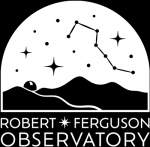(Sept. 2010 through Jan. 2011)

In the summer of 2010, the Hubble Heritage Team (HHT) asked the American Association of Variable Star Observers (AAVSO) to study M31_V1, a variable star in the Andromeda Galaxy. “M31” refers to the Messier catalogue number (the Andromeda Galaxy is the 31st object listed in Messier’s catalogue), and “V1” is the designation given to the star by Edwin Hubble, indicating it was the first variable star he studied in that galaxy.
Historical background
M31_V1 is a variable star of the “delta Cepheid” type: these stars brighten and dim in a regular cycle, and are arguably the most important type of star to astronomers. In 1912, Henrietta Leavitt, an astronomer at Harvard University, discovered a relationship between a delta Cepheid’s period (its time to complete one cycle) and its luminosity: astronomers use that relationship to calculate the distance to the star.
At that time, it was widely thought that everything was part of the Milky Way Galaxy. Separate galaxies, as we know them now, were thought to be nebulas within the Milky Way Galaxy: indeed, the entire Universe was thought to be contained within the Milky Way.
Edwin Hubble didn’t discover the period-luminosity relationship nor its implications for determining distance, but he studied delta Cepheids in what was then called the “Andromeda Nebula” and in 1924 came to the startling conclusion that this “nebula” was in fact so far away it couldn’t possibly be part of the Milky Way: it had to be a completely separate galaxy. As this and other “nebulas” were confirmed to indeed be separate galaxies at very great distances from us (and most were receding from us), mankind’s understanding of the size and nature of the Universe was radically changed.
The project
The HHT had scheduled time on the Hubble Space Telescope (HST) in December 2010 and January 2011 to study the star M31_V1, but needed ground-based observations ahead of time to determine exactly when the star would be at its maximum and minimum brightness. It asked the AAVSO to send out a notice to its members, asking them to observe the star over a period of time. Data from observers was then sent back to the AAVSO which analyzed the data and determined the star’s cycle. The HHT used the data to determine which dates and times would be best-suited for pointing the HST at the star.
RFO contributed photometry data for the project from September 2010 through the first week of January 2011. The AAVSO selected three observers’ data (RFO’s points in blue below):

Based on these points, the star’s cycle was determined to be 31.414 days: the interval from one peak of brightness to the next:

This cycle was sent to the Hubble team which then determined the dates to image the star using the Hubble Space Telescope: December 16, 17, 20, 21, 29 and 30 (2010) and January 6 and 7 (2011).
The Result
The Hubble Team’s 5/23/2011 press release, entitled “The Star that Changed the Universe,” describes the results, including a video and this image of the star’s cycle.

